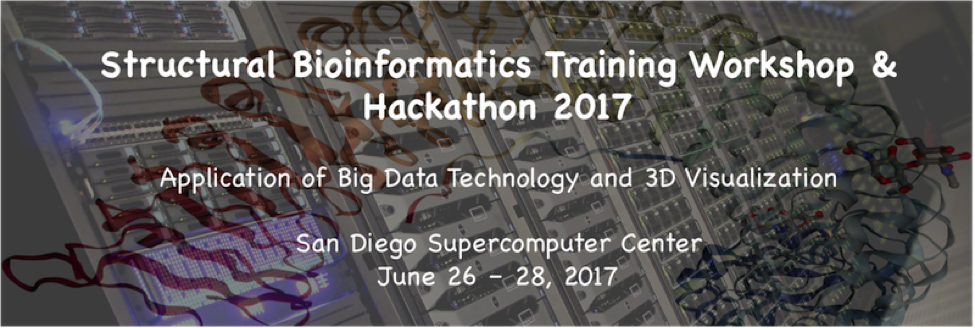INSTRUCTORS
Peter Rose, Director Structural Bioinformatics Laboratory, SDSC
Jose Duarte, Senior Scientist, RCSB PDB, SDSC
Antonin Pavelka, Postdoc, Structural Bioinformatics Laboratory, SDSC
Andreas Prlic, Technical & Scientific Team Lead, RCSB PDB, SDSC
Alexander Rose, Scientific Visualization Developer, RCSB PDB, SDSC
Yana Valasatava, Postdoc, RCSB PDB, SDSC
Short Bios:
Peter Rose is the Director of the Structural Bioinformatics
Laboratory at SDSC. Since joining SDSC in 2007, his group built the RCSB
Protein Data Bank to its current strength as a key resource in biology and drug
discovery. He currently works on NIH funded Big Data to Knowledge (BD2K)
projects to enable large scale mining of 3D macromolecular structures. Prior to
joining UCSD, he held research and management positions at Pfizer La Jolla,
formerly Agouron Pharmaceuticals, where he was instrumental in the
establishment of the structure-based drug design platform. His research
interests include structural bioinformatics, structure-based drug design, 3D
visualization, and application of big data technologies and machine learning in
bioinformatics and biomedicine.
Antonín Pavelka received his PhD in computer science in 2016 and is currently a postdoc at UCSD. He is developing bioinformatics software since 2006 and his main focus is on design of algorithms for structural bioinformatics. His experiences include development of methods utilizing sequence-based mutation analysis, application of Voronoi diagrams for efficient analysis of macromolecular structures, design of algorithms for big data hierarchical clustering, searching shortest paths in graphs and most recently, design of structural alignment algorithm.
Alexander Rose. Interactive visualization of very large molecules on the web is becoming a challenging problem as experimental techniques advance at an unprecedented rate and deliver structures of increasing size. His most recent project: NGL a highly memory efficient and scalable WebGL-based viewer that renders molecular complexes with millions of atoms interactively on desktop computers and smartphones alike, making it a tool of choice for web-based molecular visualization in research and education.


